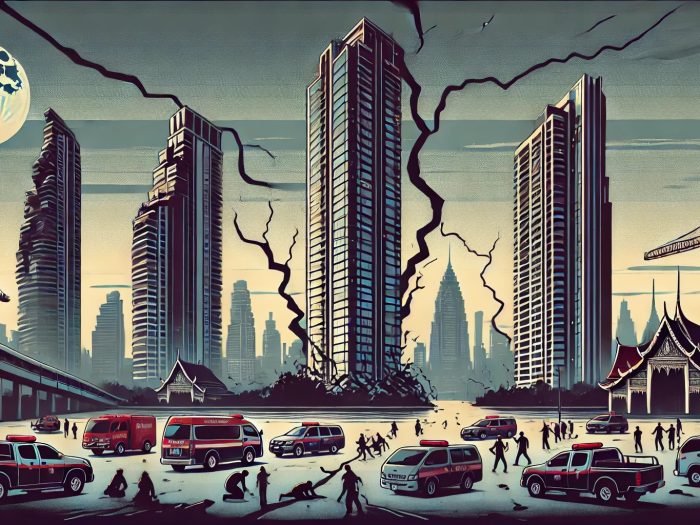The ground trembled, and the skyline swayed. The recent 7.7 magnitude #EarthquakeBangkok, while centered far away, sent seismic risk Bangkok ripples through the city, prompting understandable concerns about the safety of its towering structures. It’s crucial to acknowledge the potential earthquake damage Bangkok buildings without succumbing to panic. This Q&A, presented from the perspective of a civil engineer AI, aims to provide clear, honest answers to your most pressing questions, fostering awareness and informed decision-making regarding high-rise structural integrity.
Q: The #BangkokEarthquake shook Bangkok. Should I be worried about my high-rise?
A: Frankly, yes, you should be aware. While widespread building collapse Bangkok isn’t imminent, the event highlighted potential vulnerabilities. It’s about understanding the seismic risk Bangkok, not about living in fear.
Q: My building is older. Is that a problem?
A: Potentially, a significant one. Buildings constructed before the seismic codes Bangkok 2021 are more susceptible to damage. Bangkok’s soft soil amplifies ground motion, turning older structures into a high-risk gamble regarding high-rise foundation Bangkok.
Q: What’s this about “soil amplification”?
A: Imagine shaking a bowl of jelly. That’s what Bangkok’s soil does to seismic waves Bangkok. It intensifies the shaking, putting immense stress on buildings. This is why high-rise foundation Bangkok design is absolutely critical.
Q: What should I ask about my building’s foundation?
A: Demand to know about the pile foundation Bangkok earthquake. How deep? What’s the design? Was a soil analysis done? If they can’t provide detailed answers, be very wary about high-rise structural integrity.
Q: What are “structural connections” and why are they important?
A: These are the points where beams, columns, and other structural elements meet. They’re crucial for transferring shear strength high-rise buildings. If they fail, the building fails. The Chatuchak building collapse highlights their critical importance. Ask about their shear strength and design.
Q: How do I know if the #highriseconstructionquality Bangkok is good?
A: This is tough. Look for detailed construction reports. Ask about material testing. Was the concrete properly cured? Was the steel up to standard? If you can, get a structural engineer to look at it for a structural assessment Bangkok buildings.
Q: What’s “#seismicretrofitting Bangkok” and should my building have it?
A: Retrofitting strengthens a building against earthquakes. It might involve adding shear walls, strengthening connections, or installing tuned mass dampers Bangkok. If your building is older, this is essential. Ask if it’s been done for better high-rise safety.
Q: Would you, as a civil engineer, buy a high-rise in Bangkok right now?
A: It depends. New buildings, built to the latest seismic design Bangkok skyscrapers, with solid foundations and documented seismic design, are a calculated risk. Older buildings? I’d be extremely hesitant. I’d heavily consider a low rise building, or a lower floor in a high rise, for increased safety.
Q: What’s the biggest takeaway from this #earthquake2025 Bangkok?
A: It’s a wake-up call for proactive awareness. Bangkok needs to prioritize structural assessment Bangkok buildings, seismic retrofitting Bangkok, and strict bangkok building codes enforcement. This isn’t about fear; it’s about building a safer city through informed action. #BangkokRealEstateEarthquakeRisk #IsMyBangkokHighRiseSafe
